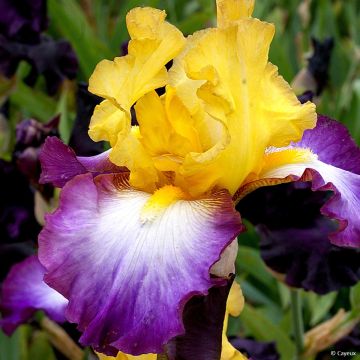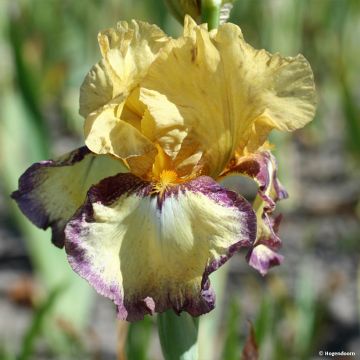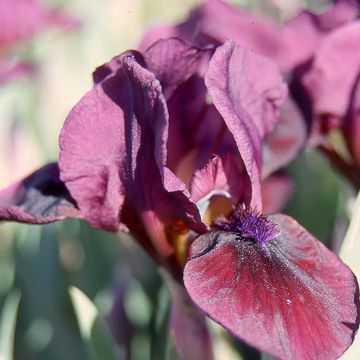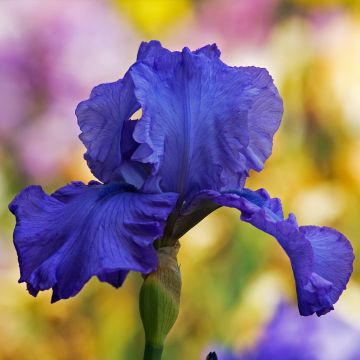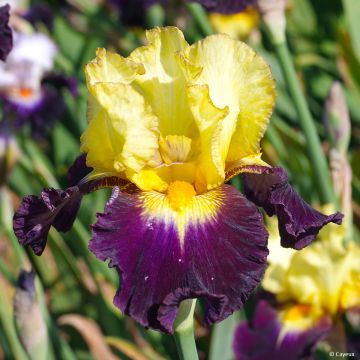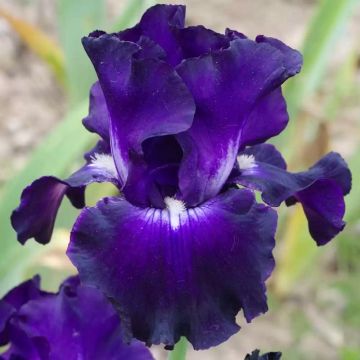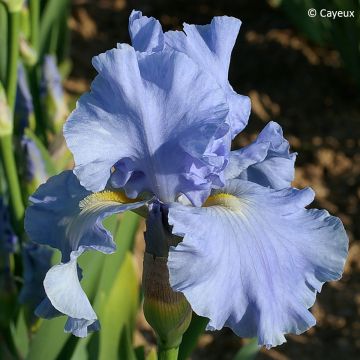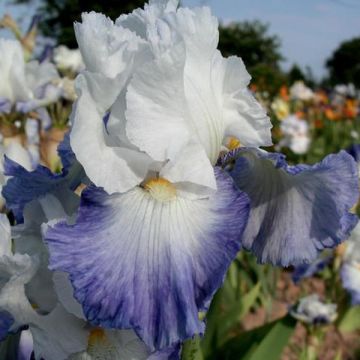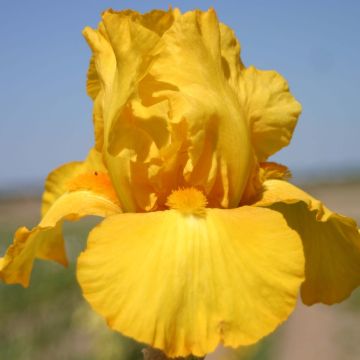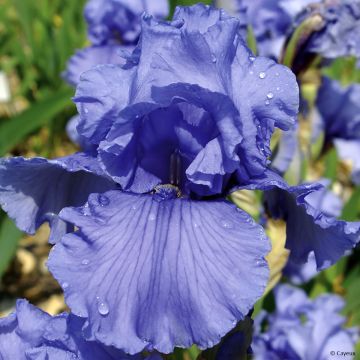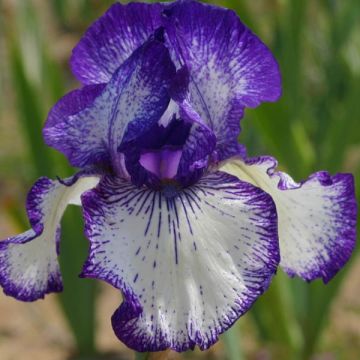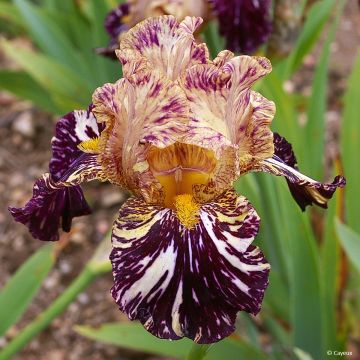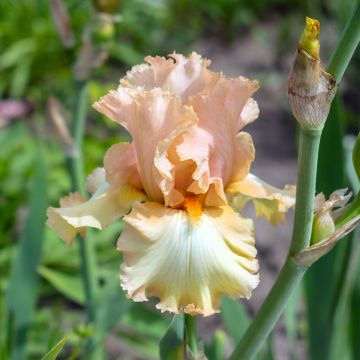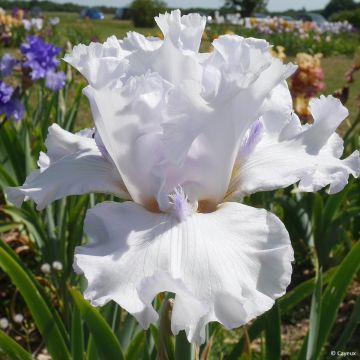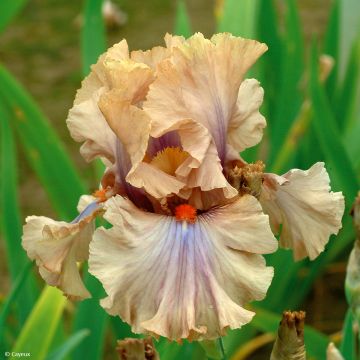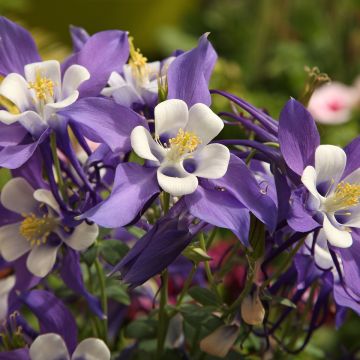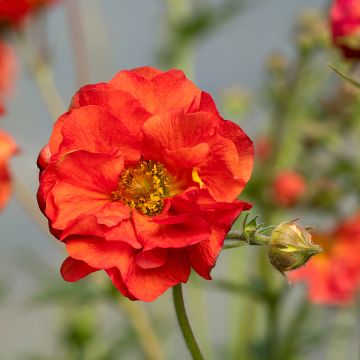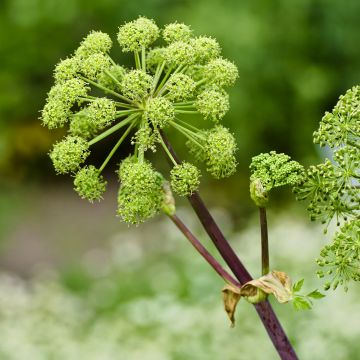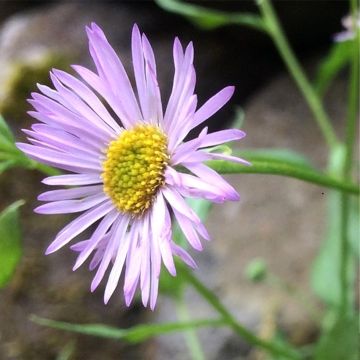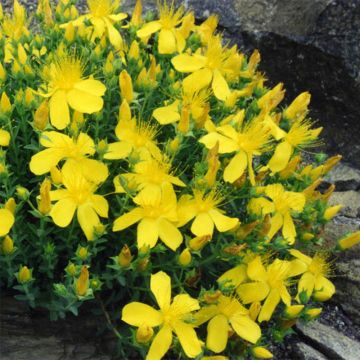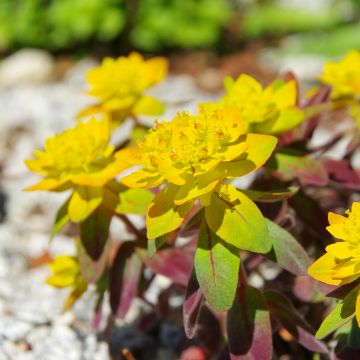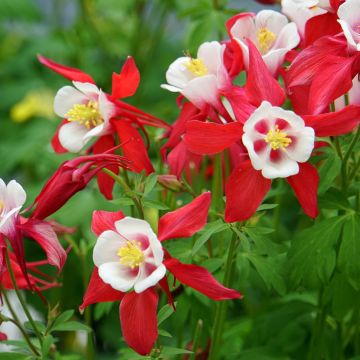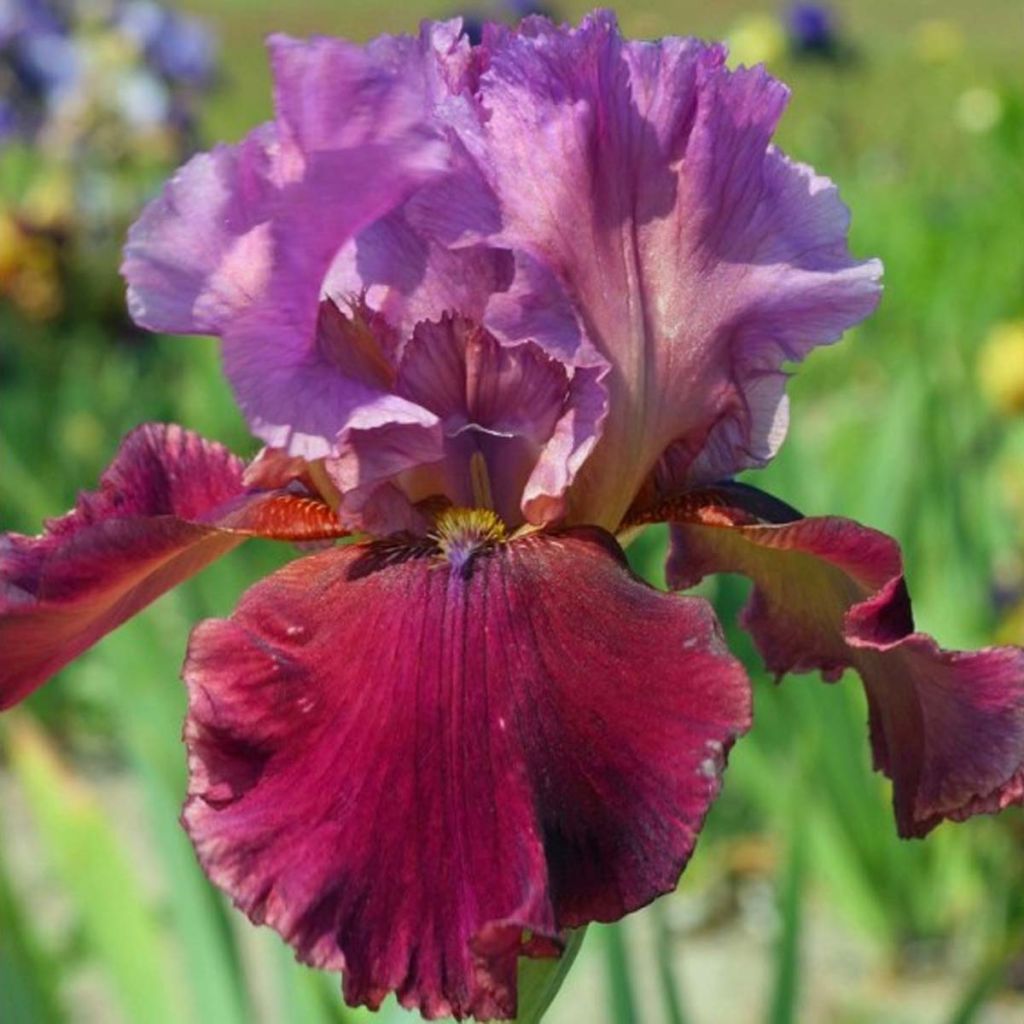

Iris germanica Gamay - Iris des Jardins Gamay
Iris Gamay
Iris germanica Gamay
German Iris, Bearded Iris
Bulb received in good condition, well packaged and labelled. I'm waiting until the end of the month to plant them so that the soil is less dry, we'll see in the spring!
Rachel, 09/09/2020
Special offer!
Receive a €20 voucher for any order over €90 (excluding delivery costs, credit notes, and plastic-free options)!
1- Add your favorite plants to your cart.
2- Once you have reached €90, confirm your order (you can even choose the delivery date!).
3- As soon as your order is shipped, you will receive an email containing your voucher code, valid for 3 months (90 days).
Your voucher is unique and can only be used once, for any order with a minimum value of €20, excluding delivery costs.
Can be combined with other current offers, non-divisible and non-refundable.
Why not try an alternative variety in stock?
View all →This plant carries a 12 months recovery warranty
More information
We guarantee the quality of our plants for a full growing cycle, and will replace at our expense any plant that fails to recover under normal climatic and planting conditions.

Does this plant fit my garden?
Set up your Plantfit profile →
Description
German Iris 'Gamay', also known as the tall bearded iris, produces very large, fragrant flowers in shades of mauve, dark pink, and burgundy in May-June. Its growth is particularly vigorous, quickly forming beautiful clumps. Ideal for borders, flower beds, and slopes.
The 'Gamay' German Iris is a deciduous perennial plant with rhizomes that grows in upright clumps in spring. It is a giant, reaching 1m (3ft) high when in bloom. It spreads without any theoretical limit, with the centre becoming sparser in favour of the periphery. The sword-shaped foliage is glaucous green and highly veined. Flower stems appear in April and bloom in May. The astonishing colour of this plant is enhanced by the texture of the petals and sepals. Note that the flowers are also highly fragrant.
Do you have a sunny, warm location, rather dry in summer?
That's the perfect spot for irises! In the shade, they struggle to grow and won't bloom. They are hardy and don't require winter protection. Well-drained soil, even rather dry and limestone, is perfectly suitable. Excessively moist soil can cause rhizome rot. Plant them from July to September. This gives the rhizomes enough time to grow and develop new roots before winter. They should be planted as soon as they are purchased for best results. Plan to divide irises every 4 years or so to give them fresh soil.
To accompany the irises, choose plants that thrive in sunny, dry soil. Opt for shorter plants or those with light foliage to avoid shading them, and consider their decorative appearance and flowering time. Gaura, for example, meets all three criteria, and its later flowering will keep the flower bed attractive in summer. Eschscholzia, perennial geraniums, salvias, and Libertia also pair well with irises. The relative shelter from the wind allows for the use of tall irises against a wall. They can also be planted in the foreground with shorter, early varieties. The vegetable garden can be planted with a few clumps or borders of irises for cutting.
Path border: The entire range of irises can be used, from early dwarfs under 40 cm (16in) to tall irises over 75 cm (30in) that bloom in May, including intermediate varieties (in terms of size and earliness) and border irises, which are medium-sized but bloom with the tall ones. Tall irises are at risk of being blown over if not staked.
Flower border: the domain of border irises but also dwarfs, depending on the circumstances.
Mixed border: The entire range of sizes can be used, based on the available space (foreground, background) and the size of the surrounding plants.
Iris bed, the iris garden: a paradise for iris enthusiasts where the choice and arrangement of varieties (shape, colour, fragrance...) reflects each individual's taste. The use of the full range of bearded irises allows for two and a half months of flowers in spring. Choose reblooming irises for a few additional flowers in late summer or autumn.
Flowering
Foliage
Plant habit
Botanical data
Iris
germanica
Gamay
Iridaceae
German Iris, Bearded Iris
Cultivar or hybrid
Other German Iris - Bearded Iris
View all →Planting and care
Provide adequate spacing for the size and vigour of the variety: about 34-50 cm (13-20in) for large ones. Dig a hole large and deep enough. Make a conical pile of soil on which to place the rhizome and spreading roots. Cover the roots. The rhizome needs to be left slightly above the soil surface. It should not be planted in a dip (risk of rot), so anticipate that the soil will settle and the iris will sink. In clay or damp soil, the rhizome should even be left raised on a slight mound. To make the soil cling to the roots, lightly firm and water abundantly after planting. Water 2-3 times if necessary until it starts growing. For a mix of colours, plant them in groups of several plants of the same variety. Always consider the direction of growth of the rhizomes by arranging them in a star shape, with buds and leaves facing outwards, and spacing them well away from other varieties to allow them room to develop.
Planting period
Intended location
Care
Planting & care advice
-
, onOrder confirmed
Reply from on Promesse de fleurs
Similar products
Haven't found what you were looking for?
Hardiness is the lowest winter temperature a plant can endure without suffering serious damage or even dying. However, hardiness is affected by location (a sheltered area, such as a patio), protection (winter cover) and soil type (hardiness is improved by well-drained soil).

Photo Sharing Terms & Conditions
In order to encourage gardeners to interact and share their experiences, Promesse de fleurs offers various media enabling content to be uploaded onto its Site - in particular via the ‘Photo sharing’ module.
The User agrees to refrain from:
- Posting any content that is illegal, prejudicial, insulting, racist, inciteful to hatred, revisionist, contrary to public decency, that infringes on privacy or on the privacy rights of third parties, in particular the publicity rights of persons and goods, intellectual property rights, or the right to privacy.
- Submitting content on behalf of a third party;
- Impersonate the identity of a third party and/or publish any personal information about a third party;
In general, the User undertakes to refrain from any unethical behaviour.
All Content (in particular text, comments, files, images, photos, videos, creative works, etc.), which may be subject to property or intellectual property rights, image or other private rights, shall remain the property of the User, subject to the limited rights granted by the terms of the licence granted by Promesse de fleurs as stated below. Users are at liberty to publish or not to publish such Content on the Site, notably via the ‘Photo Sharing’ facility, and accept that this Content shall be made public and freely accessible, notably on the Internet.
Users further acknowledge, undertake to have ,and guarantee that they hold all necessary rights and permissions to publish such material on the Site, in particular with regard to the legislation in force pertaining to any privacy, property, intellectual property, image, or contractual rights, or rights of any other nature. By publishing such Content on the Site, Users acknowledge accepting full liability as publishers of the Content within the meaning of the law, and grant Promesse de fleurs, free of charge, an inclusive, worldwide licence for the said Content for the entire duration of its publication, including all reproduction, representation, up/downloading, displaying, performing, transmission, and storage rights.
Users also grant permission for their name to be linked to the Content and accept that this link may not always be made available.
By engaging in posting material, Users consent to their Content becoming automatically accessible on the Internet, in particular on other sites and/or blogs and/or web pages of the Promesse de fleurs site, including in particular social pages and the Promesse de fleurs catalogue.
Users may secure the removal of entrusted content free of charge by issuing a simple request via our contact form.
The flowering period indicated on our website applies to countries and regions located in USDA zone 8 (France, the United Kingdom, Ireland, the Netherlands, etc.)
It will vary according to where you live:
- In zones 9 to 10 (Italy, Spain, Greece, etc.), flowering will occur about 2 to 4 weeks earlier.
- In zones 6 to 7 (Germany, Poland, Slovenia, and lower mountainous regions), flowering will be delayed by 2 to 3 weeks.
- In zone 5 (Central Europe, Scandinavia), blooming will be delayed by 3 to 5 weeks.
In temperate climates, pruning of spring-flowering shrubs (forsythia, spireas, etc.) should be done just after flowering.
Pruning of summer-flowering shrubs (Indian Lilac, Perovskia, etc.) can be done in winter or spring.
In cold regions as well as with frost-sensitive plants, avoid pruning too early when severe frosts may still occur.
The planting period indicated on our website applies to countries and regions located in USDA zone 8 (France, United Kingdom, Ireland, Netherlands).
It will vary according to where you live:
- In Mediterranean zones (Marseille, Madrid, Milan, etc.), autumn and winter are the best planting periods.
- In continental zones (Strasbourg, Munich, Vienna, etc.), delay planting by 2 to 3 weeks in spring and bring it forward by 2 to 4 weeks in autumn.
- In mountainous regions (the Alps, Pyrenees, Carpathians, etc.), it is best to plant in late spring (May-June) or late summer (August-September).
The harvesting period indicated on our website applies to countries and regions in USDA zone 8 (France, England, Ireland, the Netherlands).
In colder areas (Scandinavia, Poland, Austria...) fruit and vegetable harvests are likely to be delayed by 3-4 weeks.
In warmer areas (Italy, Spain, Greece, etc.), harvesting will probably take place earlier, depending on weather conditions.
The sowing periods indicated on our website apply to countries and regions within USDA Zone 8 (France, UK, Ireland, Netherlands).
In colder areas (Scandinavia, Poland, Austria...), delay any outdoor sowing by 3-4 weeks, or sow under glass.
In warmer climes (Italy, Spain, Greece, etc.), bring outdoor sowing forward by a few weeks.






























